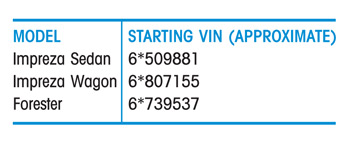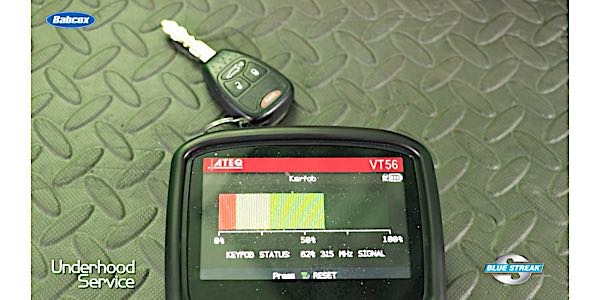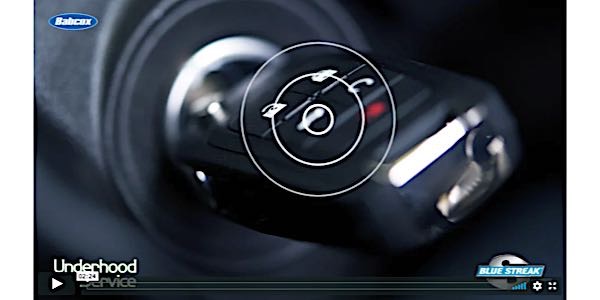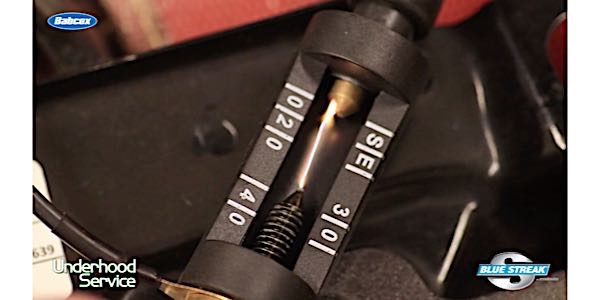When diagnosing a misfire code(s) P0301, P0302 P0303 and/or P0304, there is the possibility that the ignition coil and/or high-tension cables could be the cause. In addition to the information published in the service manual, use the following procedure to check the ignition coil and high-tension cables.
Applicability: 2000 and later Legacy/Outback 2.5L SOHC vehicles; and 1999 and later Impreza and Forester 2.5L SOHC vehicles.
New-style high-tension cables have been used in production since the VINs shown:
Repair Procedure:
1. Check the tower portion of the ignition coil for carbon tracks (leakage). If leakage is more than 5mm long, the ignition coil and high-tension cables should be replaced.
2. Check the high-tension cables for carbon tracks (leakage). If leakage is evident, replace the high-tension cables and clean the ignition coil.
3. If there is any evidence of carbon, clean the surface of the ignition coil using a clean, soft rag dampened with water.
4. Allow the ignition coil to dry.
5. Clean the same area of the ignition coil using a clean, soft rag dampened with isopropyl alcohol.
6. Allow the ignition coil to dry.
Note: Do not insert the high-tension cables until the ignition coil is dry.
Parts Information:
The high-tension cables for the Impreza and Forester have changed to a silicone rubber boot that has a shiny appearance. Note that the part numbers have not changed. The Legacy and Outback high-tension cables also have a silicone rubber boot.
Courtesy of IDENTIFIX.













